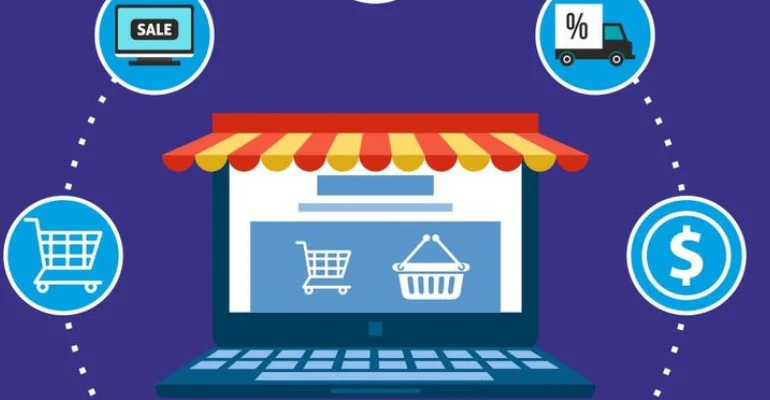In today’s digital age, mobile optimization is no longer an option; it’s a necessity. With more than half of all web traffic coming from mobile devices, businesses that ignore mobile users risk losing out on a significant portion of their audience. Optimizing your website for mobile users is essential to providing a seamless experience that keeps visitors engaged, reduces bounce rates, and drives conversions. Here are some best practices to help you ensure your website is mobile-friendly in 2024 and beyond.
1. Implement a Responsive Design
A responsive website design automatically adjusts to fit the screen size of the device being used, whether it’s a smartphone, tablet, or desktop computer. This means your website will look great and function properly on any device, providing a consistent experience for all users.
How to Achieve This:
– Use flexible grid layouts that resize content based on the screen width.
– Optimize images and media with responsive scaling techniques to prevent slow loading.
– Utilize CSS media queries to apply different styles for different devices.
Why It Matters:
A responsive design ensures that users don’t have to pinch, zoom, or scroll horizontally to view content, resulting in a better user experience and higher engagement.
2. Prioritize Fast Loading Times
Speed is crucial when it comes to mobile browsing. Studies show that users are likely to abandon a website if it takes more than three seconds to load. Therefore, optimizing your website’s loading speed is vital.
Best Practices:
– Compress images and use next-gen formats like WebP.
– Minimize the use of heavy scripts and plugins that slow down your site.
– Leverage browser caching and content delivery networks (CDNs) to speed up load times.
Why It Matters:
A fast-loading website enhances user experience, reduces bounce rates, and improves your rankings on search engines, which prioritize speed in their algorithms.
3. Simplify Navigation
Mobile screens are smaller than desktops, so it’s essential to make navigation as simple and intuitive as possible. Users should be able to find what they’re looking for quickly and effortlessly.
Tips for Mobile-Friendly Navigation:
– Use a “hamburger” menu (three horizontal lines) to condense navigation options.
– Keep the menu and critical buttons easily accessible, preferably at the top of the screen.
– Include a search bar to help users find content quickly.
Why It Matters:
Clear and easy navigation keeps users engaged and reduces the frustration that could lead to them leaving your site.
4. Optimize Touch Elements
Mobile users navigate with their fingers, not a mouse, so it’s crucial to ensure all touch elements (like buttons, links, and forms) are optimized for finger taps.
Key Considerations:
– Make buttons large enough (at least 48×48 pixels) and spaced apart to prevent accidental taps.
– Ensure all touch targets are easily clickable and provide feedback (like color change) when tapped.
– Avoid using pop-ups that can be difficult to close on mobile screens.
Why It Matters:
Optimizing touch elements enhances usability and accessibility, making it easier for users to interact with your site.
5. Optimize Content for Mobile Readability
Reading on a mobile device can be challenging if your content isn’t formatted properly. Ensure your text is easy to read without zooming or scrolling horizontally.
Best Practices:
– Use a legible font size (at least 16 pixels) and a line height that enhances readability.
– Break up large chunks of text with subheadings, bullet points, and short paragraphs.
– Keep your content concise and to the point to maintain user attention.
Why It Matters:
Well-optimized content improves user engagement and makes it easier for mobile users to consume information on your site.
6. Enable Accelerated Mobile Pages (AMP)
Accelerated Mobile Pages (AMP) is an open-source framework that allows web pages to load almost instantly on mobile devices. AMP strips down web pages to their essentials, eliminating heavy scripts and unnecessary elements.
How to Implement AMP:
– Use AMP-specific HTML tags and components to create lightweight pages.
– Validate your AMP pages using Google’s AMP Validator tool.
– Monitor performance using AMP analytics to make continuous improvements.
Why It Matters:
AMP significantly boosts page loading speed, which can lead to higher engagement and better search engine rankings for your site.
7. Test Your Website on Multiple Devices
Testing is a crucial part of mobile optimization. What looks great on one device may not necessarily work on another, so it’s essential to test your website across various devices, screen sizes, and browsers.
Tools for Testing:
– Use Google’s Mobile-Friendly Test tool to check how your site performs on mobile devices.
– Leverage browser developer tools to simulate different screen sizes and orientations.
– Gather user feedback and perform A/B testing to identify and resolve any issues.
Why It Matters:
Regular testing ensures that your website remains user-friendly across all platforms, leading to higher satisfaction and retention rates.
8. Focus on Mobile SEO
Optimizing your website for mobile users also involves ensuring it’s easily discoverable on search engines. Mobile SEO focuses on optimizing your site for search engines and user experience.
Mobile SEO Best Practices:
– Ensure your website has a mobile-friendly structure with clean URLs and proper meta tags.
– Use structured data (schema markup) to enhance your content’s visibility in search results.
– Optimize for local search by including location-based keywords and registering with Google My Business.
Why It Matters:
Mobile SEO helps improve your website’s visibility, increases organic traffic, and drives more conversions.
Conclusion: Stay Competitive with a Mobile-Optimized Website
As mobile usage continues to rise, optimizing your website for mobile users is essential to staying competitive in the digital landscape. By implementing responsive design, prioritizing loading speed, simplifying navigation, optimizing touch elements, focusing on readability, enabling AMP, testing thoroughly, and honing your mobile SEO, you can create a seamless and engaging mobile experience that keeps users coming back.
Make these best practices a priority today and see how mobile optimization can enhance your digital marketing success!














